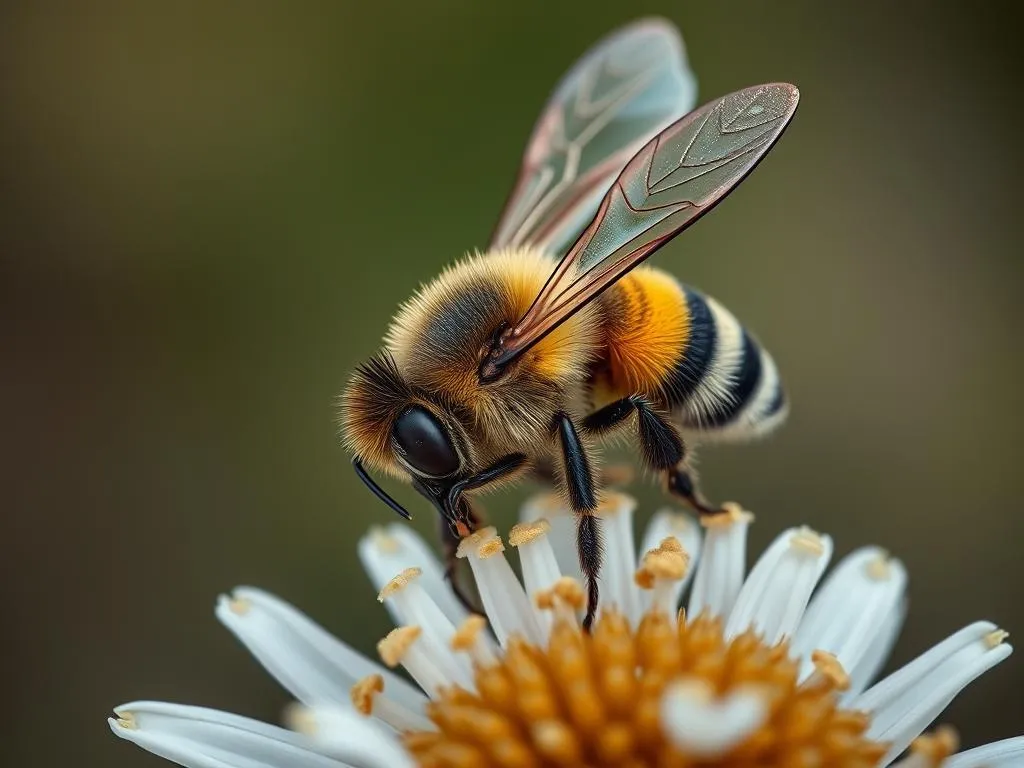
Introduction
It’s not uncommon for our furry friends to explore their environment with a little too much enthusiasm, leading to curious incidents such as when a dog eats a bee. While it may seem like a harmless act of curiosity, understanding the potential risks and reactions is vital for every dog owner. This article seeks to provide comprehensive information and guidance for pet owners navigating this peculiar situation.
Understanding the Situation
Dogs and Their Curiosity
Dogs are naturally curious creatures, driven by instinct and their sensory explorations of the world around them. Their keen sense of smell and taste often leads them to investigate various objects, including insects. When it comes to bees, their bright colors and buzzing sounds can capture a dog’s attention, prompting them to chase or even eat them. This behavior can be attributed to:
- Instinctual Behavior: Many dogs are hardwired to hunt and forage, which can include chasing after small creatures like bees.
- Playfulness: Dogs often see insects as toys or playmates, leading them to engage with them in ways that can be harmful.
- Mimicking: If a dog sees another animal or human interacting with bees or other insects, they may feel encouraged to do the same.
Types of Bees and Their Behavior
There are several types of bees, with honeybees and bumblebees being the most common. Understanding the behavior of these insects can help dog owners prepare for potential encounters.
- Honeybees: Generally docile unless provoked, honeybees will sting only when they feel threatened. They can lose their stinger after an attack, leading to their death.
- Bumblebees: These bees are larger and also tend to be non-aggressive, but they can defend themselves if they feel cornered.
It’s crucial to remember that while bees are typically harmless, they will react aggressively if they perceive a threat to their hive or themselves.
Immediate Reactions After Ingestion
Possible Symptoms to Watch For
If your dog has consumed a bee, it’s essential to monitor them closely for any signs of distress or allergic reactions. Common symptoms include:
- Drooling: Excessive salivation can indicate discomfort or irritation.
- Pawing at the Mouth: This behavior often suggests that something is wrong, such as a stinger lodged in their mouth.
- Swelling: Look for swelling around the mouth, face, or paws, which could indicate an allergic reaction.
- Lethargy or Weakness: Unusual tiredness can signal a more severe reaction.
Assessing the Severity of the Situation
Not all dogs will have severe reactions after eating a bee, but assessing the situation is crucial. Consider the following factors:
- Size of the Dog: Smaller dogs may be more susceptible to severe reactions due to their size.
- Previous Allergies: If your dog has a history of allergies, they might be at higher risk for a reaction.
- Behavior Changes: If your dog becomes unusually withdrawn or shows signs of distress, it’s essential to take this seriously.
When in doubt, it’s always better to err on the side of caution and consult your veterinarian.
What to Do If Your Dog Eats a Bee
First Aid Steps
If your dog has eaten a bee, there are several first aid steps you can take at home:
- Check the Mouth: Carefully inspect your dog’s mouth for any remaining bee parts or stingers. If you see a stinger, try to remove it using tweezers, being cautious not to squeeze the venom sac.
- Cool Compress: If you notice swelling, applying a cool compress to the affected area can help alleviate discomfort.
- Monitor Behavior: Keep a close eye on your dog’s behavior for any changes over the next few hours.
When to Contact the Vet
Certain scenarios warrant contacting your veterinarian:
- Severe Swelling: If your dog’s face or throat begins to swell significantly, it could indicate a serious allergic reaction.
- Difficulty Breathing: If your dog shows signs of respiratory distress, immediate veterinary care is necessary.
- Persistent Vomiting or Diarrhea: If your dog cannot keep food or water down, it’s time to consult your vet.
- Changes in Behavior: If your dog becomes unresponsive or excessively lethargic, seek professional help.
When you contact your vet, consider asking the following questions:
- What symptoms should I monitor closely?
- Are there specific treatments you recommend?
- Are there any medications I should keep on hand for future incidents?
Treatment Options
Common Veterinary Treatments
If your dog requires veterinary attention after eating a bee, common treatments may include:
- Antihistamines: Your veterinarian may prescribe antihistamines to manage allergic reactions.
- Corticosteroids: In more severe cases, corticosteroids may be administered to reduce swelling and inflammation.
- Supportive Care: Your vet may recommend fluids or other supportive treatments to ensure your dog remains hydrated and stable.
Home Remedies and Care
While veterinary intervention may be necessary, there are also home remedies to alleviate discomfort:
- Hydration: Ensure your dog has access to fresh water to stay hydrated.
- Rest: Encourage your dog to rest and avoid strenuous activities until they feel better.
- Calm Environment: Create a peaceful environment to help reduce any stress your dog may be experiencing.
Always consult your veterinarian before trying any home remedies to ensure they are safe and appropriate for your pet’s condition.
Preventive Measures
Training Your Dog
Preventing your dog from eating insects, including bees, can be achieved through training techniques:
- Recall Commands: Teach your dog a reliable recall command to call them away from potential dangers.
- Distraction Techniques: Use toys or treats to redirect their focus when they show interest in insects.
- Positive Reinforcement: Reward your dog for ignoring insects and following commands, reinforcing good behavior.
Environment Management
Creating a bee-safe environment is also essential:
- Monitor Outdoor Time: Keep an eye on your dog when they are outside, especially during peak bee activity in the spring and summer.
- Bee Repellents: Consider using natural bee repellents in your garden to reduce bee presence.
- Remove Attractants: Clear away any food scraps or sugary substances that may attract bees to your outdoor area.
Awareness of seasonal considerations can help you manage your dog’s exposure to bees effectively.
FAQs
Common Questions from Dog Owners
Can a dog die from eating a bee?
While it’s rare for a dog to die from eating a bee, severe allergic reactions can occur. If your dog shows signs of distress, seek veterinary care immediately.
What if my dog gets stung?
If your dog is stung, monitor for swelling and allergic reactions. If severe symptoms develop, contact your veterinarian for guidance.
How can I tell if my dog is having an allergic reaction?
Signs include swelling, difficulty breathing, excessive drooling, vomiting, or lethargy. If any of these symptoms occur, seek veterinary attention promptly.
Are certain breeds more susceptible to bee stings?
While all dogs can be affected, breeds that are more prone to allergies may experience more severe reactions.
What should I do if I’m unsure about my dog’s symptoms?
When in doubt, it’s best to contact your veterinarian for advice. They can help assess the situation and determine the best course of action.
Conclusion
Understanding the implications of your dog eating a bee is crucial for every pet owner. From recognizing symptoms to knowing when to seek veterinary assistance, being prepared can make a significant difference in your dog’s health and well-being. Awareness and proactive measures can help ensure that your dog remains safe while enjoying their curious explorations. If you ever find yourself in a situation where your dog has eaten a bee, don’t hesitate to consult your veterinarian for personalized advice and care.









